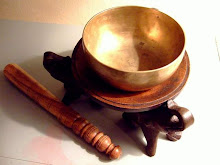 "The more you can dream, the more you can do."
"The more you can dream, the more you can do."- Michael Korda
Sleeping giant Lawu lies to the East, and Merbabu and Merapi, two active volcanoes are visible when the clouds have cleared in the West.
It is said that the city never sleeps, and I wondered if I would find out the reason during my short visit last week.
As the plane descended after the short hop from Jakarta, the sprawling provincial town of Solo came into view, bounded by verdant rice paddies and a muddy Bengawan Solo, Java island’s longest river.
Not an ordinary city by any means, for Solo has been ruled for centuries by two royal dynasties, one in the larger palace of the Susuhunan or Sultan, and another in the smaller palace of the Mangkunegara. The grand titles of the rulers in the sultan’s palace, Paku Buwono (Center of the World) and Hamengku Buwono (Upholder of the World), are testimony to the city’s world view throughout much of Javanese history.
Solo's god-king was traditionally regarded as the most powerful ruler in the land. Although all kingdoms and local principalities have been subsumed by the Republic of Indonesia, the dynasty has in fact continued.
Not long ago, the succession of the 13th ruler of the dynasty was marked by intense rivalries, showing that the royal family of Solo, although nowadays endowed with far fewer resources and temporal powers, is still vital in Java’s society. The city’s quest to dispense power to the world still lives on.
What kind of power can be so enduring? In Divided Royalty (2005), Mark Forbes gives some hints. He quotes a princess of the palace of the sultan saying that spiritual strength emanates from the palace. And he goes on to explain that “aside from three wives in the physical world, the Sultan is also betrothed to the spirit-queen of the sea, climbing a tall white tower inside the Kraton (palace) each year to service her needs in a private bedchamber.”
Clearly, then, there is more to Solo’s power than can be observed in daylight. It is very much a round-the-clock affair.
On a slightly more modest scale, princes in the second palace go by the title of Mangkunegara (Holder of the Country). This beautiful small palace was established in 1757 and is today the ancestral home of the ninth prince of the dynasty.
One of the rulers, Prince Mangkunegara IV, lived from 1853 to 1881 and was a famous poet. His lines are still recited to musical accompaniment of gamelans across the island, and they can even be heard by extraterrestrials outside our solar system.
Puspa Warna or A Variety of Flowers is one of the well known poems penned by this Prince for a male singer to be accompanied by the traditional Javanese gamelan orchestra, in the pentatonic slendro manyura style. It is said that the piece would be performed for the entrance of the prince.
The text refers to 9 different kinds of flowers, each symbolizing a different rasa or “emotion inspired in an audience by a performer.” They are the kencur (resurrection lily), blimbing (starfruit), duren (durian), aren (sugarpalm), gedhang (banana tree), jati (teak tree), jambé (betel palm), kapas (cotton plant), and pandan (pandanus). The flowers are thought to refer to his favorite companions.
Here is the Prince’s first stanza inspired by the resurrection lily flower:
“Flower of the kencur plant
always talked about with admiration,
her body is well-shaped
And here is another example of Javanese poetry set to music, a stanza from the rarely performed ladrang Sekar Gadhung, a central Javanese song of unknown origin, again about a flower, and also played on the slendro manyura style gamelan, this one with a female singer.
“Tip of the fingerbone
is in fact a remedy.”
One of the most famous gamelan sets in the country to accompany such potent poetry is the Kyai Kanyut Mesem (Drifting in Smiles), which can be enjoyed in the central pendopo (audience hall) of the Mangkunegaran palace in Solo. While smiling and drifting to music and poetry, the appreciative audience can glance up to see the eight-colored painting on the high ceiling.
 Each of the eight colors symbolized a power to ward off a variety of sins and disasters. Yellow helped to ward off sleepiness, blue guarded against disaster, black against hunger, green against desire or frustration, white against lust, rose against fear, red against evil, and purple against evil thoughts. The palace offered plenty of inspiration to keep the listeners awake.
Each of the eight colors symbolized a power to ward off a variety of sins and disasters. Yellow helped to ward off sleepiness, blue guarded against disaster, black against hunger, green against desire or frustration, white against lust, rose against fear, red against evil, and purple against evil thoughts. The palace offered plenty of inspiration to keep the listeners awake.An intriguing mix of powers then, is my guess for the reasons why the city is reported not to sleep. Mystical powers that keep Solo placed at the center of the world. Musical powers to celebrate emotions that are inspired by artful composers and skillful performers. And sensual powers nurtured by cooks serving up local delicacies around the clock. And the island’s longest river to carry the city’s name, its name the inspiration for the well known song Bengawan Solo.
I found a place to work and dream. And keep dreaming. The more we dream, the more we can do.
No time for sleep.



















